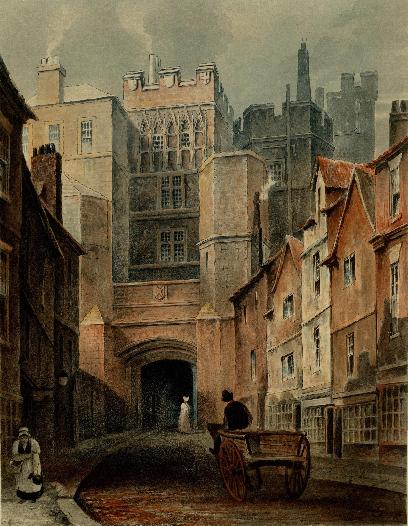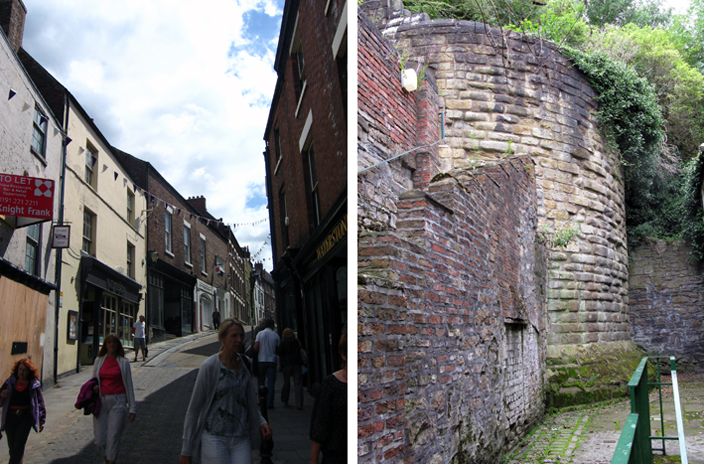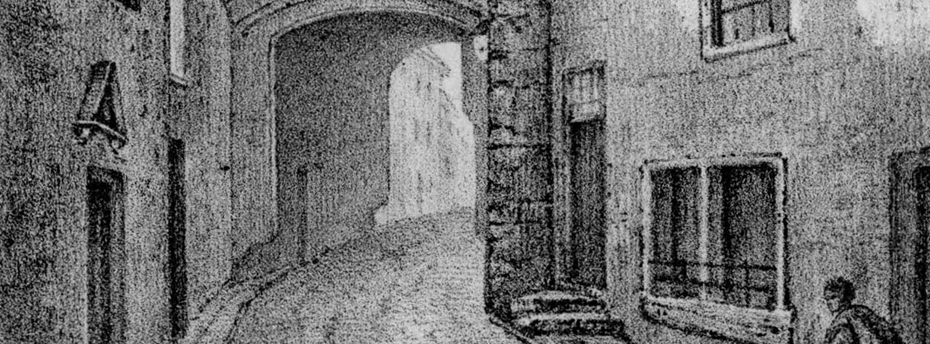
The Great North Gate of Durham Castle, before its demolition in the 1820s. The fact that the gate was used as a prison would have made the entrance to the Cathedral and Castle precinct rather unpleasant.
The North Gate was one of the Castle’s more important defensive structures.
The gate was constructed at the vulnerable neck of the Durham Peninsula, and was the entrance to the outer bailey, forming part of the northern line of defence.
Its defensive importance meant that it was often added to over the centuries, each addition making it a more formidable defensive structure. In fact, the gate's re-fortification in the early 15th century was the last significant defensive addition to the Castle.
In later years the gate was used as the county jail. This continued until 1820 when the Bishop of Durham (Barrington) provided the necessary funds to build a new prison, allowing the demolition of the gate which, by then, was seen as dysfunctional and an obstruction to traffic.

These two images show what remains of the Great North Gate today: not much. Left: except for a bend in the street and a sharp rise in street level, there is little to indicate that the North Gate stood here (although the basement of what is now the Library bar still retains some of the old stonework). Right: the only major surviving element of the gate is one bastion in a back alley of one of the houses off Saddlers Street. It indicates the scale of the destroyed structure.

